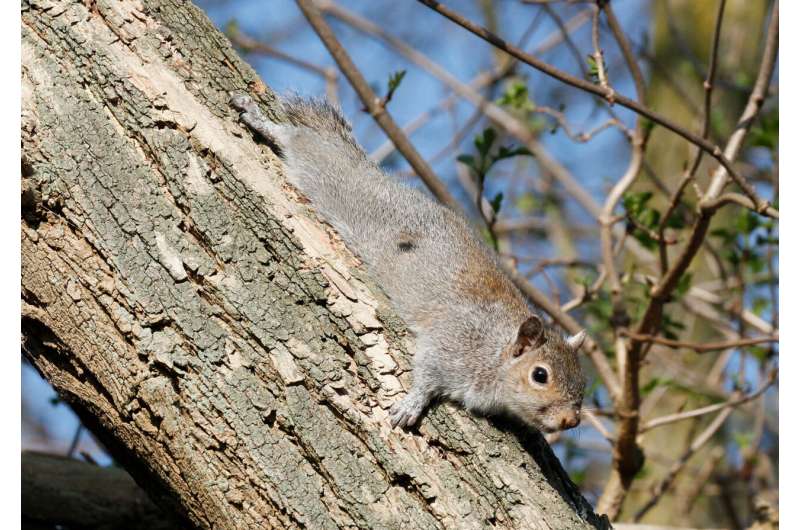This article has been reviewed according to Science X's editorial process and policies. Editors have highlighted the following attributes while ensuring the content's credibility:
fact-checked
peer-reviewed publication
trusted source
proofread
Study finds fewer invasive alien species on lands of Indigenous Peoples

The introduction of animal and plant species into new regions by humans is increasing rapidly worldwide. Some of these alien species, such as the gray squirrel, have a far-reaching impact on nature as they displace native species.
An international research team led by Justus Liebig University Giessen (JLU) and Senckenberg—Leibniz Institution for Biodiversity and Earth System Research, Germany, has now discovered that there are significantly fewer alien species in areas of Indigenous Peoples than in other comparable natural areas. The study was published in the journal Nature Sustainability.
Thousands of plant and animal species are now resident in regions outside their native range because they have been introduced by humans.
"Some alien species become a problem for native species—as predators, competitors for food and habitat or carriers of diseases," explains biodiversity researcher and lead author of the study Dr. Hanno Seebens from University of Giessen, Germany.
The researchers investigated whether fewer alien species are found in areas managed by Indigenous Peoples compared to other regions. Indigenous Peoples represent ethnic groups, which settled in these regions long before the arrival of Europeans—for example, the Native Americans, the Aborigines of Australia or the Sami in Scandinavia.
Worldwide, 28% of the land surface is inhabited by Indigenous Peoples, with the majority of these areas located in remote regions of the world. Many of these areas are of enormous importance for the conservation of biodiversity, as they are often located in biodiversity hotspots such as the Amazon basin or wilderness areas in the Arctic.
"In areas managed by Indigenous populations, the loss of biodiversity is significantly lower, as these natural areas are used more sustainably," says Dr. Aidin Niamir, co-author of the study from the Senckenberg—Leibniz Institution for Biodiversity and Earth System Research in Frankfurt.
The researchers analyzed millions of data points on the distribution of alien plant and animal species. "The results were very clear," says Niamir. "In areas of Indigenous Peoples, we found a third fewer alien species than in comparable areas." The researchers attribute this enormous difference primarily to more sustainable land use, a higher proportion of forests and a lower accessibility for humans.
"The results show that sustainable land use makes a huge contribution to preventing the spread of alien species," says Seebens.
"Indigenous Peoples usually use their lands traditionally and sustainably. Our study makes it clear that protecting the rights of Indigenous Peoples is also essential for the protection of biodiversity—for example, in areas such as the Amazon region or in Southeast Asia, where the overexploitation of forests is a massive problem."
More information: Hanno Seebens et al, Biological invasions on Indigenous peoples' lands, Nature Sustainability (2024). DOI: 10.1038/s41893-024-01361-3
Journal information: Nature Sustainability
Provided by University of Giessen



















